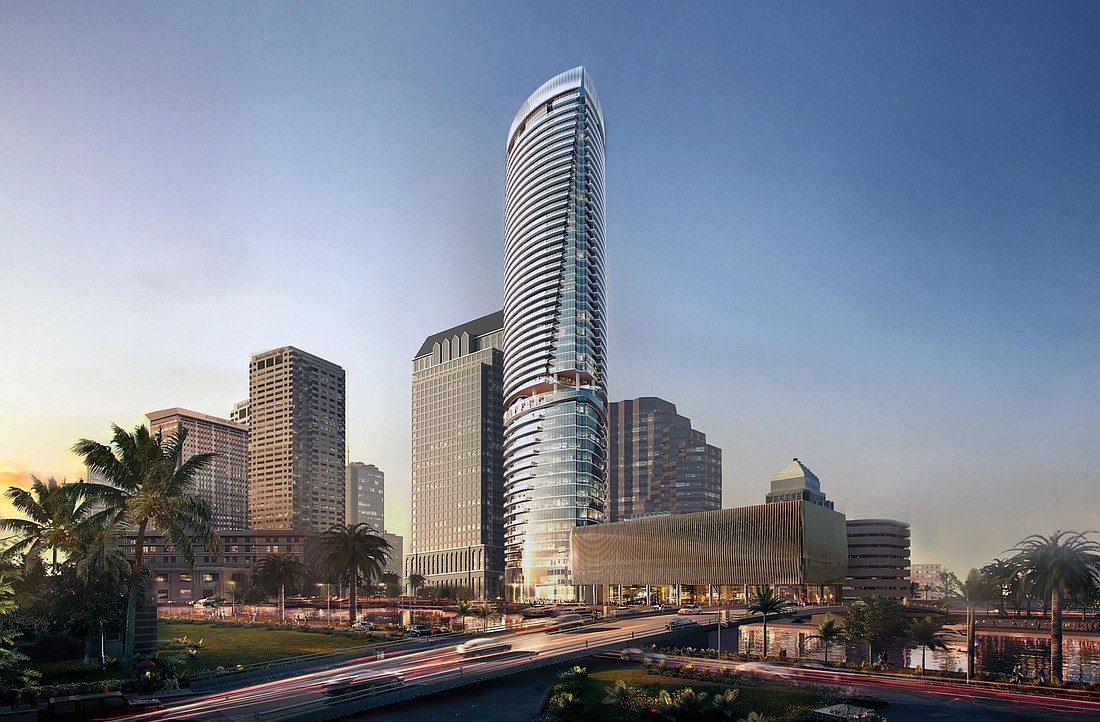- November 24, 2024
-
-
Loading

Loading

Success begets success, as the saying goes, and Tampa Bay has been nothing but successful the past five years, the result of a heretofore largely untapped waterfront, relative low cost of living and job creation that’s outpaced the nation.
That was the conclusion of a panel of commercial real estate experts assembled by brokerage firm Marcus & Millichap for the firm’s fourth annual Multifamily Forum Tampa, held April 27 at the Hilton Tampa Airport Westshore.
“The quality of life and the affordability of housing along the waterfront, I believe, is second to none for metro areas around the country,” says Larry Feldman, president of Tampa-based Feldman Equities, which owns a handful of office properties in downtown Tampa and St. Petersburg.
Those attributes are driving billions of dollars of new investment in downtown Tampa alone, where thousands of new apartment and condominium units are being constructed or planned, more than 1 million square feet of new office space is being designed and at least a pair of new hotels are in the offing.
And as has been the case elsewhere, in markets such as San Francisco, Denver, Washington, D.C., and Atlanta, much of the city’s growth has come in the form of multifamily rentals.
Tampa has added roughly 4,000 new apartment units in each of the past four years, members of the “No End In Sight: The Development Outlook Across West & Central Florida” panel noted. Some 20 apartment projects are under construction or about to commence.
“There was a long gap from the late 1970s through the last development cycle where there was very few new rentals built,” says Jay Curran, a senior vice president with Crescent Communities, a multifamily developer.
“To an extent, we’ve been playing catch-up in Tampa with multifamily development over the past few years,” Curran says. “There’s a lot of momentum here and a lot of demand. Tampa has a relatively low cost of living and a lot of momentum on the job creation side.”
John Bowden, a senior vice president at construction firm Moss, agrees.
“The market is very strong for multifamily now, and we believe it will be for the foreseeable future,” Bowden says.
That strength may also be extending to institutions like universities and to commercial real estate sectors like high-end condominiums, which have been largely underrepresented in Tampa.
At the University of South Florida, for instance, the school is developing a new $172 million college of medicine downtown that will be part of the $3 billion Water Street Tampa development, a project being built by Strategic Property Partners.
“It’s easy to recruit folks to Tampa now,” says Charles Lockwood, the dean of USF Health, adding he believes the growth of the health care and high technology sectors in the region will lead to the growth of a biotechnology industry in Tampa.
Luxury condos, too, have been largely lacking — though that may change over the next three years with the advent of Water Street and Feldman’s planned 53-story Riverwalk Place in downtown Tampa.
“We’ve never seen in Tampa high-end condos, the likes of which you see in New York or Miami,” Feldman says, adding the 41-story One St. Petersburg condo tower and the Virage now under construction signal that buyers are interested in upscale urban living.
“I think demand for that product type here will be huge.”
Curran says Tampa’s multifamily market stands in stark contrast to that of Orlando, where downtown development has been scant but where suburban construction has been abundant.
“It’s the opposite of Orlando. People here in Tampa are willing to pay a premium, even if it’s a stretch financially, to be in this urban environment,” Curran says.
Feldman contends reurbanization has gained considerable traction, especially with younger renters.
“The typical garden-variety development is dead,” he says. “Young people don’t want to live in tikki-tackyville. The trend is real and it’s here to stay.”
But while the robust market has many benefits, Tampa also faces some challenges, panelists say.
Bowden notes labor is especially difficult to come by, and materials and commodities costs are “very volatile right now.”
“The value of work is scary right now,” Bowden says. “There’s an enormous backlog. And it’s not just the cost of the labor, it’s getting the labor. It’ll be a struggle for the next five years for sure.”
Still, Tampa’s growth is unlikely to be clipped in the near future either because of labor shortages, affordability or other woes.
“Tampa’s is a more organic growth model, and as such, very sustainable,” he says.
But while “momentum” sums up the progress in Tampa, another word — “lifestyle” — sums up the end game for many of the panelists.
“People are looking for lifestyle today,” says Rebecca Snyder, a senior vice president of development with Water Street Tampa developer Strategic Property Partners, a joint venture between Bill Gates’ Cascade Investments LLC and Tampa Bay Lightning owner Jeff Vinik.
“They don’t want to spend 45 minutes in their cars commuting each way,” she adds. “They have better things that they want to do.”